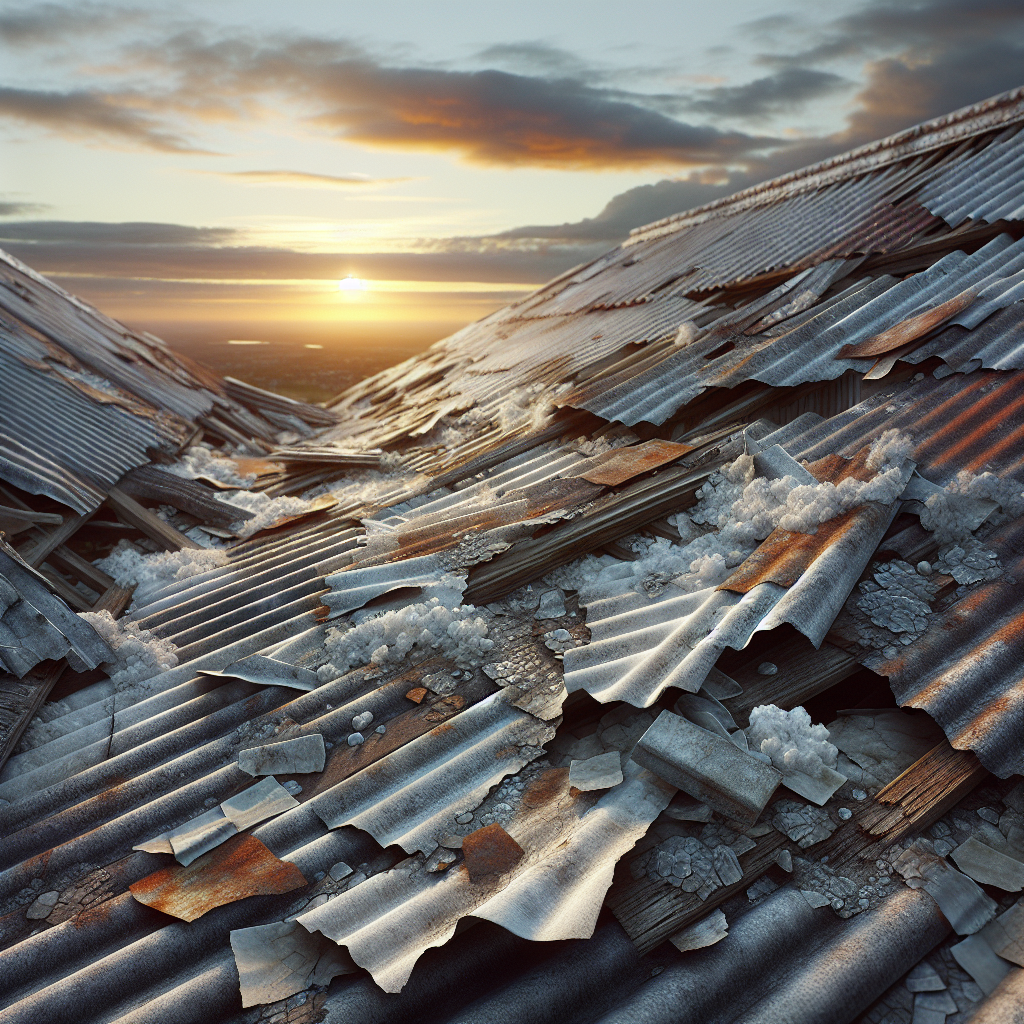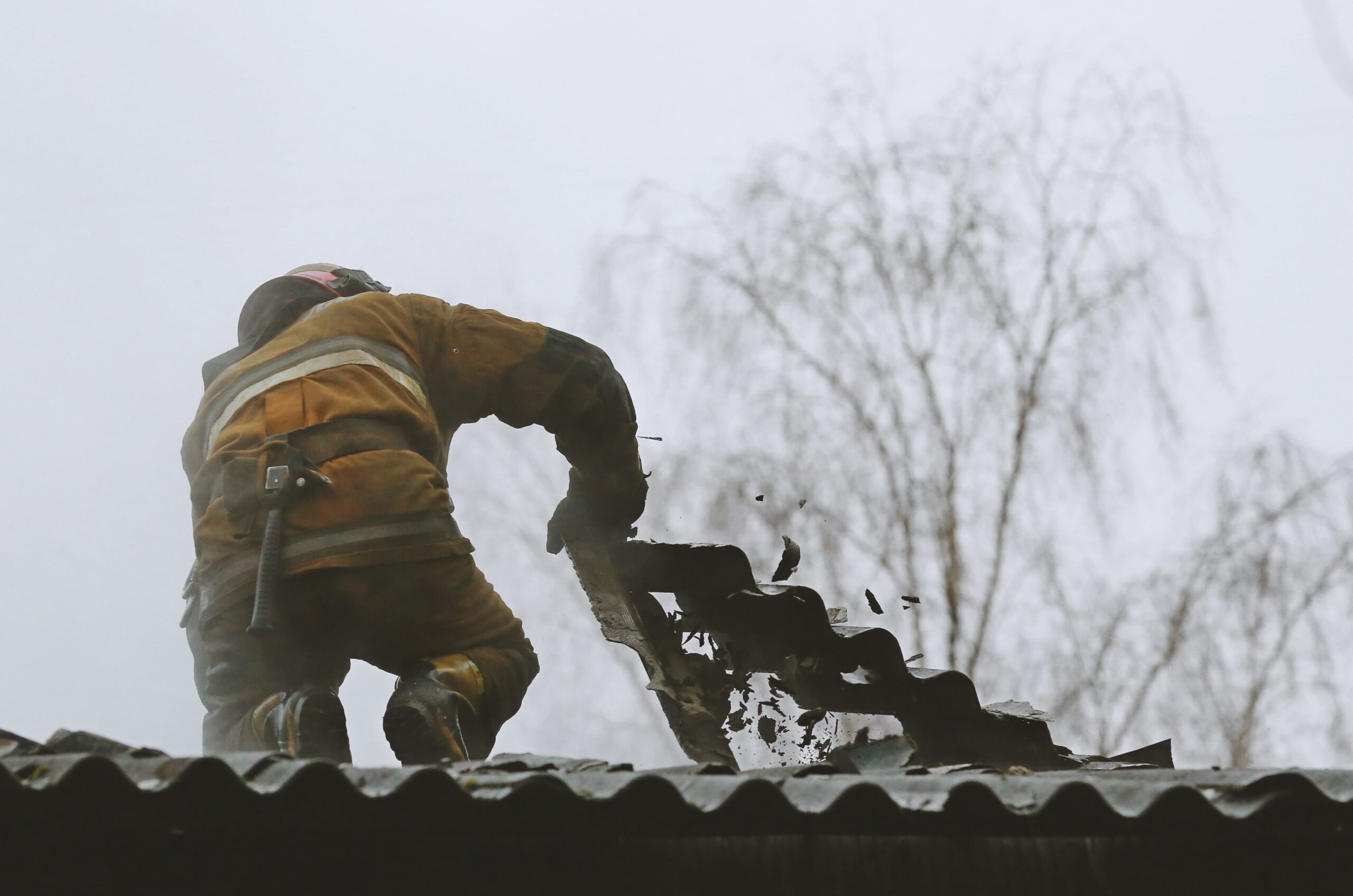
Asbestos roofs gained popularity in the 20th century due to their remarkable durability and resistance to fire, chemicals, and weather. The roofing material, created from cement reinforced with asbestos fibers, was celebrated for its strength and longevity. Many buildings still have these roofs decades after installation, demonstrating just how lasting asbestos roofs can be.
– Resistant to high temperatures and fire hazards
– Unaffected by rot, mold, and insect damage
– Withstood harsh weather conditions such as heavy rain, wind, and hail
– Required minimal maintenance compared to traditional roofing materials
The unique composition of asbestos roofs contributed to their long service life, making them a preferred choice for industrial, commercial, and residential structures for many years.
Despite their durability, asbestos roofs are not without drawbacks, especially concerning health and structural safety. Over time, the fibers in asbestos cement can become brittle and hazardous, necessitating replacement.
When asbestos-containing materials deteriorate, they can release microscopic fibers into the air. These fibers pose serious health risks when inhaled, including:
– Asbestosis, causing lung tissue scarring
– Mesothelioma, a rare cancer affecting the lining of the lungs or abdomen
– Lung cancer with prolonged exposure
Damaged or disturbed asbestos roofs increase the risk of fiber release, which is why replacement is critical for maintaining a safe environment.
Although asbestos roofs are strong, they are not immune to wear and tear:
– Exposure to prolonged moisture can cause cracking and crumbling
– Frost damage can weaken the structure in colder climates
– Impact from falling branches or hail may lead to fractures
These damages degrade the roof’s ability to protect against the elements and compromise building integrity, making replacement a prudent choice.
Regular inspections are vital for the early detection of issues with asbestos roofs to avoid potential health hazards and costly repairs.
– Visible cracks or crumbling sections of roof sheeting
– Loose or missing panels
– Signs of water leakage inside the property
– Presence of mold or mildew on walls or ceilings
– Noticeable sagging in roof structure
Homeowners should schedule professional inspections to evaluate roof condition before deciding on roof replacement.
Certified asbestos removal experts can safely assess the roof’s state, testing for fiber release and structural soundness. Attempting self-assessment or DIY repairs on asbestos roofs is unsafe and can expose occupants to hazardous fibers.
Replacing an asbestos roof involves careful planning and specialist services to ensure safety and compliance with legal requirements.
1. Initial risk assessment and planning to identify hazards
2. Obtaining necessary permits and notifying relevant authorities
3. Engaging licensed asbestos removal contractors
4. Safe removal and disposal of asbestos materials under controlled conditions
5. Installation of a new, safer roofing system such as metal, tile, or modern composite options
Strict regulations govern asbestos handling and disposal to protect workers and residents. Licensed professionals follow protocols such as:
– Use of personal protective equipment (PPE)
– Enclosure and wetting methods to limit fiber release
– Proper waste transportation and disposal in designated facilities
Failing to comply can result in legal penalties and health risks.
Switching from asbestos roofs to newer materials not only eliminates health risks but also improves property value and performance.
– Enhanced energy efficiency with insulated roofing options
– Lightweight materials that reduce structural load
– Longer warranties and easier maintenance
– Variety of designs and colors to improve aesthetic appeal
– Environmentally friendly materials with sustainable manufacturing processes
For example, metal roofs offer excellent fire resistance and longevity without the hazards associated with asbestos.
Once asbestos roofs are replaced, proper maintenance ensures the new roof’s lifespan and protects your investment.
– Regular roof inspections to catch minor issues early
– Cleaning gutters and removing debris promptly
– Addressing moss, algae, or lichen growth quickly
– Repairing minor damage before it worsens
– Scheduling professional maintenance every few years
Applying these habits prolongs roof life and maintains property safety and value.
Postponing the replacement can result in higher long-term costs due to:
– Increased risk of asbestos fiber exposure and associated health costs
– Expensive emergency repairs caused by roof leaks or collapse
– Potential legal liabilities from improper asbestos management
– Decreased property value and buyer hesitation
Recognizing these risks solidifies the need for timely replacement decisions.
Homeowners can access guidance from government agencies and industry groups about asbestos safety and removal. The Health and Safety Executive website (https://www.hse.gov.uk/asbestos/) offers comprehensive information on handling asbestos risks.
Asbestos roofs showcased remarkable resilience, making them a staple throughout much of the 20th century. However, due to health risks and structural degradation, replacement is essential for safety and peace of mind. Knowing how to identify the need for replacement, undertaking the proper procedures with licensed professionals, and investing in modern roofing materials guarantees a safer and more efficient home environment.
If your property still has an asbestos roof or if you’re unsure about its condition, don’t delay professional inspection and replacement planning. Reach out to expert contractors to get accurate assessments and guidance on upgrading your roof safely. For advice or to schedule a consultation, contact us at info@garageroofcompany.co.uk. Your home’s safety and longevity deserve expert care.








Select the service that best matches your needs
Get your free no-obligation quote today